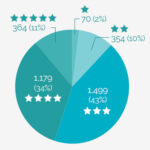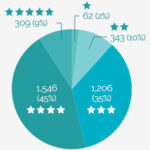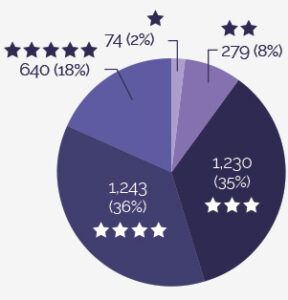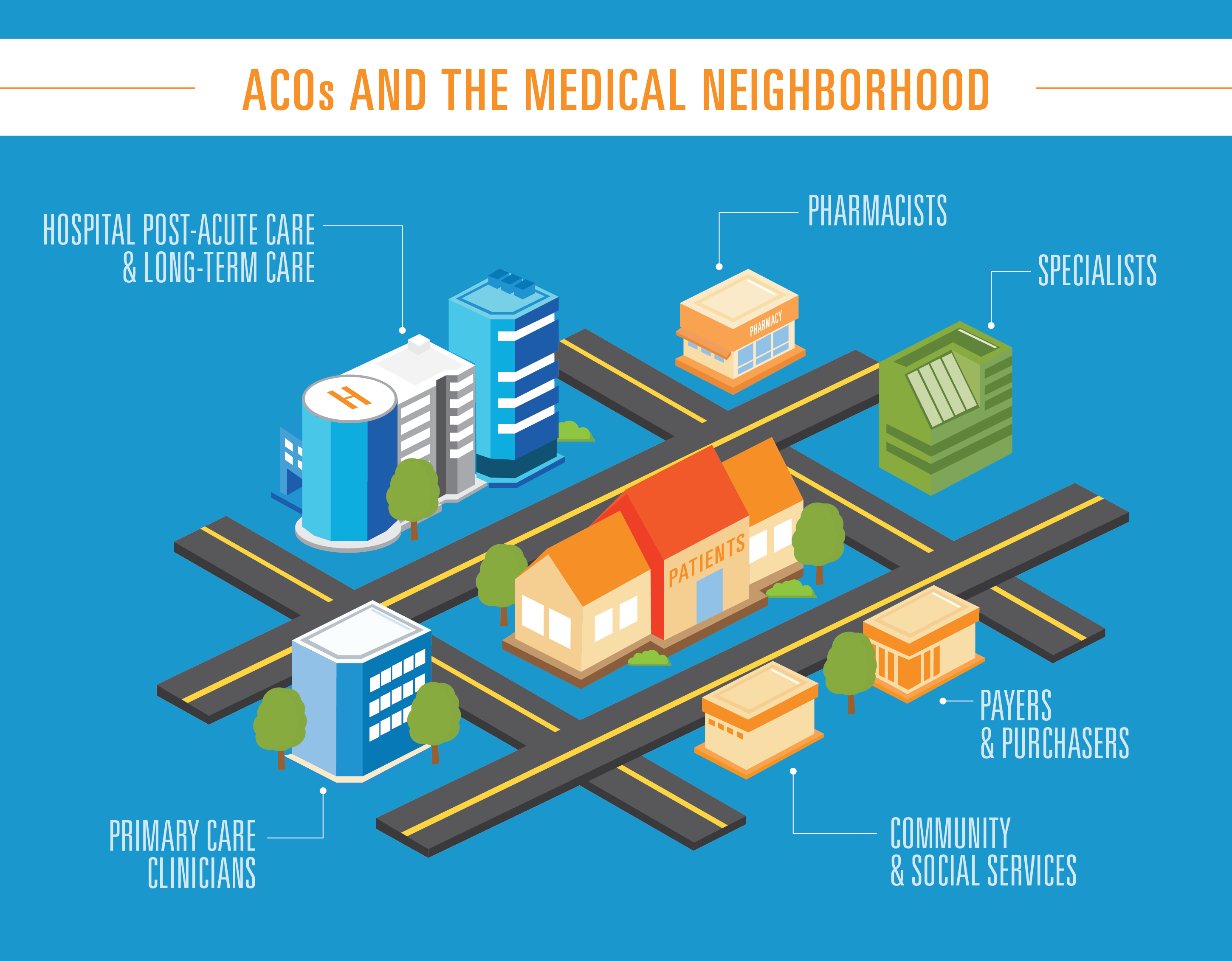
HCAHPS Scores -Measuring the Patient Experience

Here’s What HCAHPS Scores Really Look Like — How Does Your Hospital Stack Up?
Hospitals, of course, have a lot riding on HCAHPS scores. Used by providers since 2006, the HCAHPS survey allows patients to rate hospitals on a wide range of issues. This includes topics such as clinician communication, pain management, discharge information, and hospital cleanliness. These publicly available survey scores can impact hospitals in a big way, either positively or negatively, depending on the results.
High scores mean happy patients and financial incentives, while bad scores mean unhappy patients and lower revenue. Low scores, however, are often rooted in underlying problems like poor staff communication, disengaged employees, and inefficient operations.
While all hospitals would like five-star ratings across the board, the reality is, very few fall into that category. Not surprisingly, most providers sit somewhere in the middle of the pack. Read on below to see how different hospitals’ HCAHPS scores stack up compared to your own. Then, learn how service recovery can help you take your HCAHPS scores to new heights.
HCAHPS Scores: How Patients Rate Hospitals in the U.S.
With HCAHPS’ star-rating system, hospitals receive overall scores of one to five stars. One is the lowest rating, while five is the highest. In the most recent survey, the average overall score was about 2.71 stars:
- 213 hospitals (i.e. 6%) received one star
- 1,177 hospitals (i.e. 34%) received two stars
- 1,522 hospitals (i.e. 44%) received three stars
- 495 hospitals (i.e. 14%) received four stars
- 59 hospitals (i.e. 2%) received five stars
Hospitals
Hospitals
Hospitals
Hospitals
Hospitals
HCAHPS Star Ratings: Distributions
Within these overall scores, you can also find individual breakdowns. These detail how different hospitals performed on each metric measured by the HCAHPS survey. Some of the highest scores on average were communication with nurses, discharge info, and hospital ratings. Some of the lowest, on the other hand, were cleanliness, communication about medicines, and quietness.

Responsiveness of Hospital Staff

Hospital Rating

Communication with Doctors

Responsiveness of Hospital Staff

Hospital Rating

Communication with Doctors

Discharge Information

Care Transition

Communication with Nurses

Pain Management

Recommend the Hospital
Improving HCAHPS Scores
While it’s certainly not a good feeling to be disappointed by your HCAHPS scores, you can always take steps to improve them the next time around. Look through your HCAHPS report to identify any weak areas you have, and discuss how you might be able to improve things with both departmental leaders and frontline staff. If you receive poor marks on communication with doctors and nurses, for example, you might consider holding training sessions on bedside manner and patient interaction; if patients are dissatisfied with the cleanliness of your facility, you could discuss hiring additional custodial staff.
Of course, even after addressing these issues, you’ll still have to deal with mistakes and unhappy patients every once in a while — it’s impossible to be perfect all of the time. Implementing a service recovery strategy where you reach out to disgruntled patients and address their concerns head-on, though, can greatly reduce the risk of poor reviews. After all, patients who receive an apology and resolution for their complaints are much less likely to rate hospitals negatively.
For this to be effective, however, you’ll need to be able to take action as soon as an incident occurs. That’s why we’ve built Q-Visit, a feedback platform that allows you to keep a pulse on patient sentiment and intervene when needed. Q-Visit processes patient feedback in real-time and alerts you to situations in urgent need of attention so that you can step in and make things right with a patient before they leave a negative review. You can learn more about our solutions here.
There’s no instant fix for lower-than-desired HCAHPS scores, but with a commitment to change and a solid service recovery strategy in place, you can significantly increase your odds of high ratings, and all the benefits that come with it.
Interested in learning more? Let’s talk.
Quality Reviews®, Inc. was founded by leading healthcare providers and entrepreneurs with a combined 30-plus years of clinical, healthcare administrative, and technology-building experience. Reach out to learn more about our proprietary software that helps healthcare organizations capture and analyze real-time patient feedback to facilitate service recovery.








